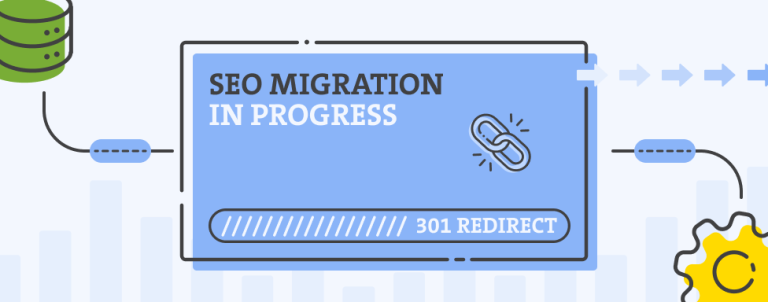If you don’t run retargeting and remarketing ads, your marketing efforts may not be as profitable as they could be. On average, only 2% of visitors convert during their first store visit, which leaves staggering 98% of visitors unconverted. This is why we use retargeting and remarketing strategies.
To start your retargeting and remarketing campaigns you need to create audiences first – list of visitors who visited the site before. For AdWords retargeting and remarketing we can use two sources to create audiences. Google Analytics and Google AdWords. Google Analytics collects data on all visitors while AdWords collects data only on visitors who previously clicked on an ad. There is also much more flexibility in the Analytics due to various metrics and dimensions it offers compared to the AdWords. That’s why we mostly create audiences in the Analytics and not in the AdWords. But, before you can create audiences, you must ensure you have a properly set Google Analytics for eCommerce, track everything you can, and know how the audiences work.
What should you know?
When creating an audience, you must define which users will enter the audience and for how long the session will last in the audience before they expire. The users who entered the created audience stay there even if you make changes to the definition and membership duration of the audience. This is important to know if you want to make changes to the audience or to deduct users/sessions directly in the audience. Whatever the change is, old rules will apply to the users who already entered the audience until they expire (under the membership duration they’ve entered). That’s why it is usually better to create new audiences and close the old ones, rather than fixing them.
Marketing managers like having the cleanest possible audiences with as little as possible overlay, but that can not be and should not be done in the audiences. Audiences are session based and should be the customer journeys visitors do to convert.
How do we define audiences?
Well, we look at the data in Google Analytics and find where we have the biggest difference in the number of transactions, conversion rate or conversion value between segments.
Time to Purchase is usually the most important factor because the most conversions happen in the first few days of the first visit. You can check your Time to Purchase report under the Conversions – Ecommerce report in Google Analytics. That’s why, whenever we create an audience, we always make them with a time horizontal. So for an example, if we need to create All Visitors audience we would create them like this:
- All Visitors 1-Day (all visitors definition and 1 day membership duration)
- All Visitors 3-Days (all visitors definition and 3 day membership duration)
- All Visitors 7-Days (…)
- All Visitors 14-Days (…)
- All Visitors 30-Days (…)
- All Visitors 540-Days (all visitors definition and 540-day membership duration – maximum)
Then we go into verticals and try to differentiate users based on their behavior on the site. So instead of having All Visitors together in one audience, we segment the audiences so we can bid differently on them. Here is an example:
- One Page Viewers – Bouncers which we segment and bid the lowest
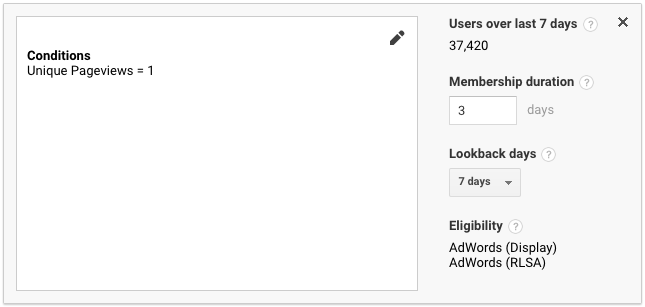
- Multi Page Viewers – Visitors who are a little bit more interested in your products than the One Page Viewers

- Browsers – Visitors who used layered navigation
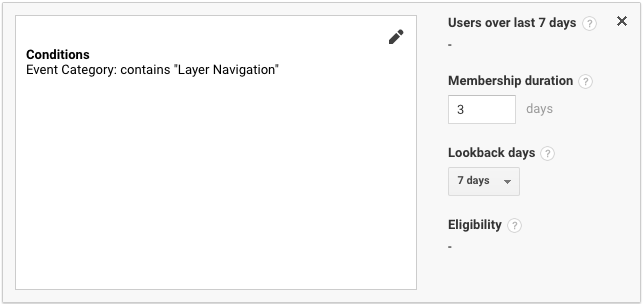
- Searchers – Visitors who used search on the site

- Cart Management Visitors – Visitors who added a product to the cart
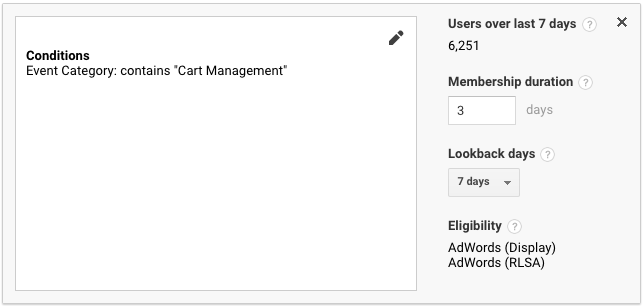
- Checkout Viewers – Visitors who got to the checkout
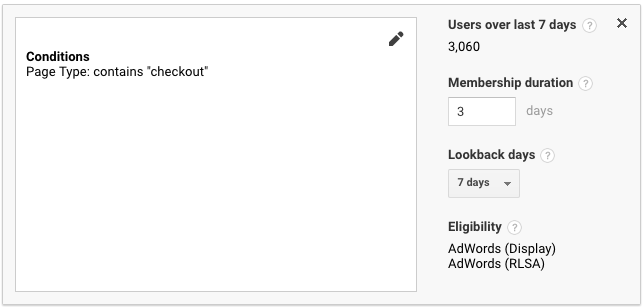
- Users – Visitors who logged in to the site

- Converters – Visitors who converted
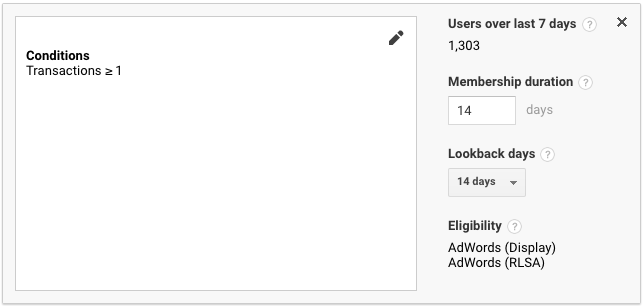
Why do we do this? Because some audiences, like Checkout Viewers, are more probable to convert than, for an example, the One Page Viewers, so we want to adjust the bids accordingly. We want to bid higher for higher converting and lower for lower converting audiences and with that get the most out of our retargeting and remarketing strategies.
If you believe your AdWords campaigns could use some professional help, make sure you check out our AdWords services!



